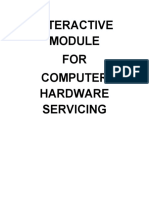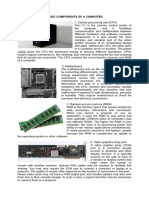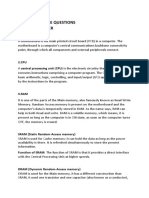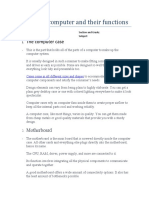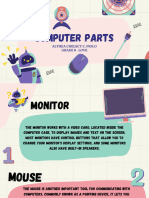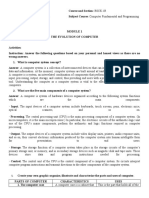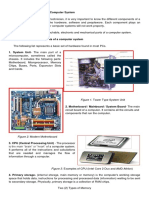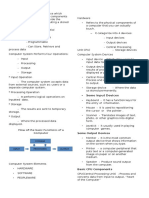0% found this document useful (0 votes)
10 views2 pagesInside A Computer
The document describes the key components of a computer, focusing on the motherboard, which houses the CPU, RAM, hard drive, expansion slots, power supply unit, and battery. The CPU acts as the brain of the computer, while RAM serves as short-term memory and hard drives provide long-term storage. It also highlights the differences between traditional hard drives and solid-state drives, as well as the role of expansion slots for upgrades.
Uploaded by
hamzasafi1213Copyright
© © All Rights Reserved
We take content rights seriously. If you suspect this is your content, claim it here.
Available Formats
Download as PDF, TXT or read online on Scribd
0% found this document useful (0 votes)
10 views2 pagesInside A Computer
The document describes the key components of a computer, focusing on the motherboard, which houses the CPU, RAM, hard drive, expansion slots, power supply unit, and battery. The CPU acts as the brain of the computer, while RAM serves as short-term memory and hard drives provide long-term storage. It also highlights the differences between traditional hard drives and solid-state drives, as well as the role of expansion slots for upgrades.
Uploaded by
hamzasafi1213Copyright
© © All Rights Reserved
We take content rights seriously. If you suspect this is your content, claim it here.
Available Formats
Download as PDF, TXT or read online on Scribd
/ 2





